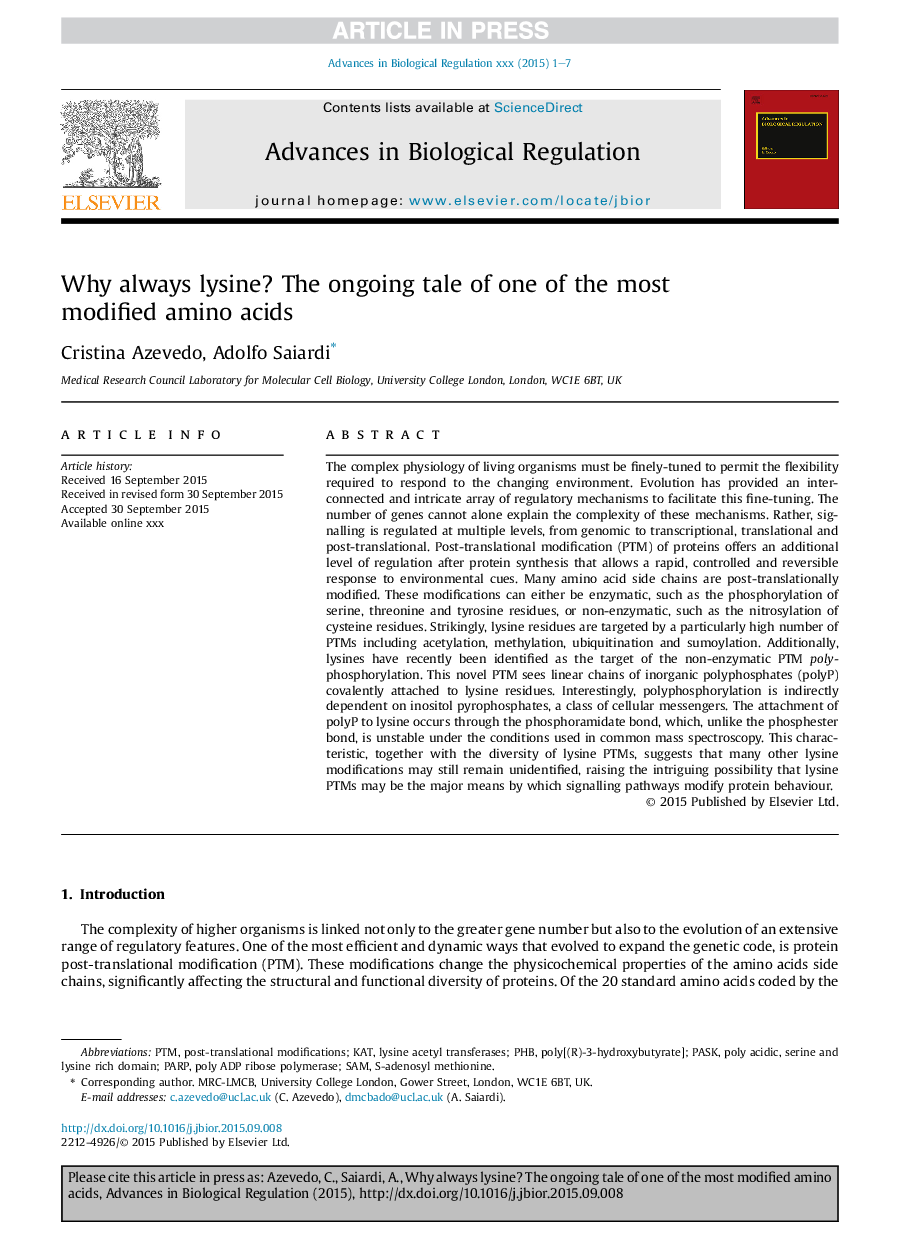| کد مقاله | کد نشریه | سال انتشار | مقاله انگلیسی | نسخه تمام متن |
|---|---|---|---|---|
| 8288009 | 1535871 | 2016 | 7 صفحه PDF | دانلود رایگان |
عنوان انگلیسی مقاله ISI
Why always lysine? The ongoing tale of one of the most modified amino acids
ترجمه فارسی عنوان
چرا همیشه لیزین؟ داستان جاری یکی از اصلاح ترین اسیدهای آمینه است
دانلود مقاله + سفارش ترجمه
دانلود مقاله ISI انگلیسی
رایگان برای ایرانیان
کلمات کلیدی
موضوعات مرتبط
علوم زیستی و بیوفناوری
بیوشیمی، ژنتیک و زیست شناسی مولکولی
زیست شیمی
چکیده انگلیسی
The complex physiology of living organisms must be finely-tuned to permit the flexibility required to respond to the changing environment. Evolution has provided an interconnected and intricate array of regulatory mechanisms to facilitate this fine-tuning. The number of genes cannot alone explain the complexity of these mechanisms. Rather, signalling is regulated at multiple levels, from genomic to transcriptional, translational and post-translational. Post-translational modification (PTM) of proteins offers an additional level of regulation after protein synthesis that allows a rapid, controlled and reversible response to environmental cues. Many amino acid side chains are post-translationally modified. These modifications can either be enzymatic, such as the phosphorylation of serine, threonine and tyrosine residues, or non-enzymatic, such as the nitrosylation of cysteine residues. Strikingly, lysine residues are targeted by a particularly high number of PTMs including acetylation, methylation, ubiquitination and sumoylation. Additionally, lysines have recently been identified as the target of the non-enzymatic PTM polyphosphorylation. This novel PTM sees linear chains of inorganic polyphosphates (polyP) covalently attached to lysine residues. Interestingly, polyphosphorylation is indirectly dependent on inositol pyrophosphates, a class of cellular messengers. The attachment of polyP to lysine occurs through the phosphoramidate bond, which, unlike the phosphester bond, is unstable under the conditions used in common mass spectroscopy. This characteristic, together with the diversity of lysine PTMs, suggests that many other lysine modifications may still remain unidentified, raising the intriguing possibility that lysine PTMs may be the major means by which signalling pathways modify protein behaviour.
ناشر
Database: Elsevier - ScienceDirect (ساینس دایرکت)
Journal: Advances in Biological Regulation - Volume 60, January 2016, Pages 144-150
Journal: Advances in Biological Regulation - Volume 60, January 2016, Pages 144-150
نویسندگان
Cristina Azevedo, Adolfo Saiardi,
